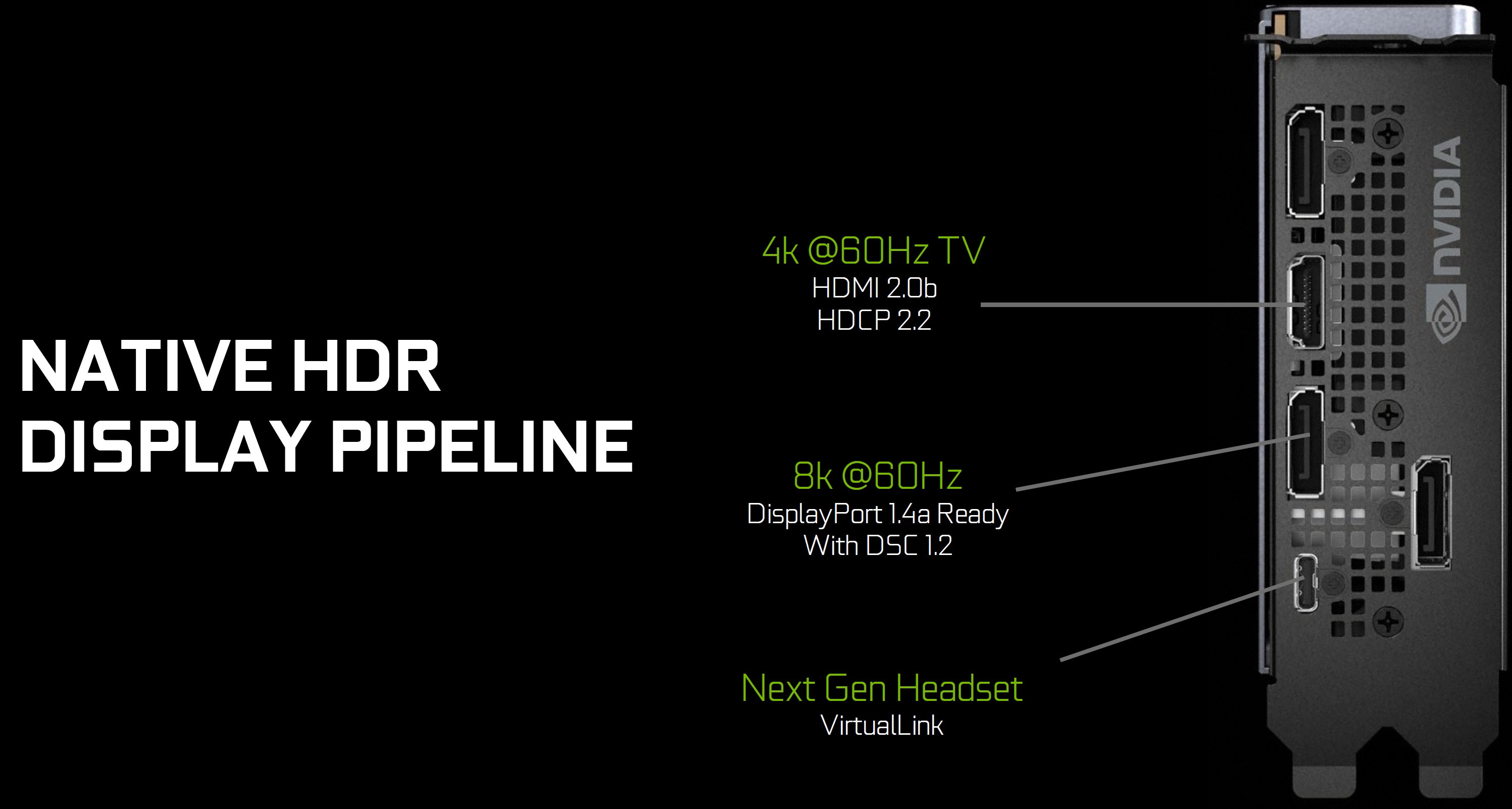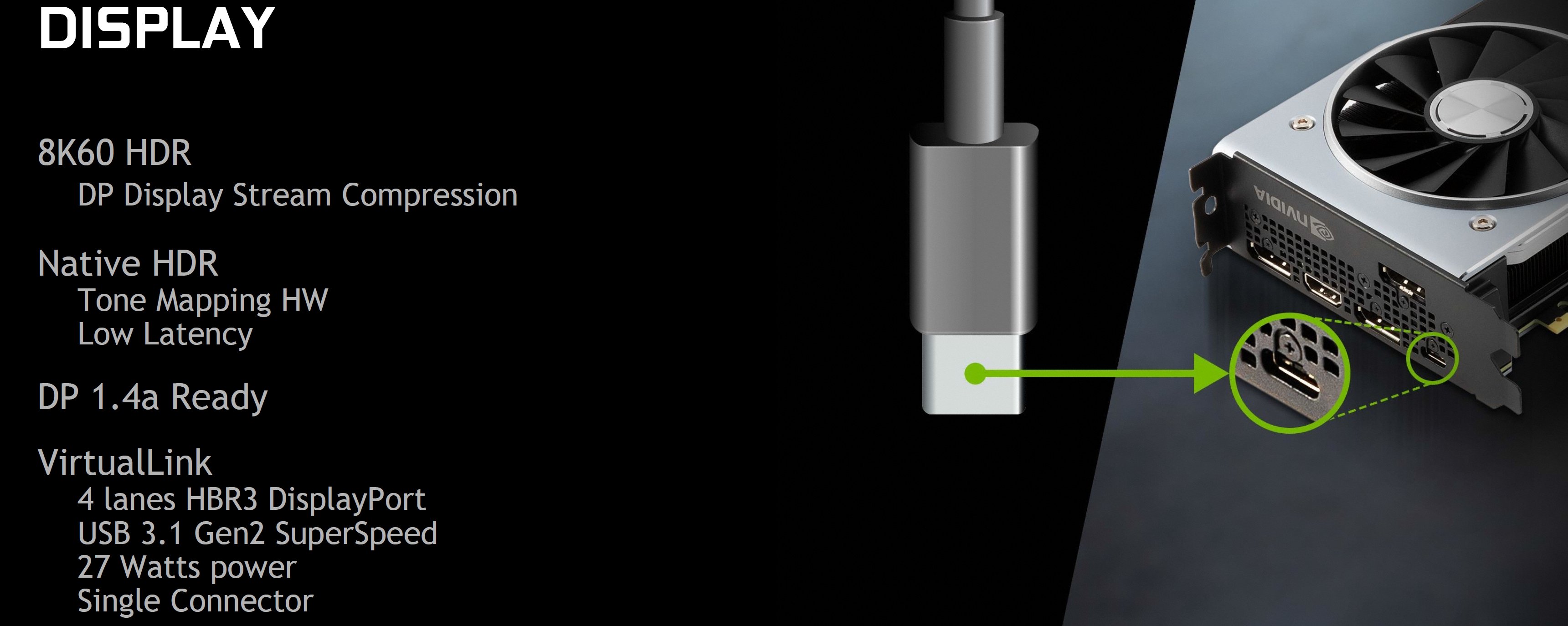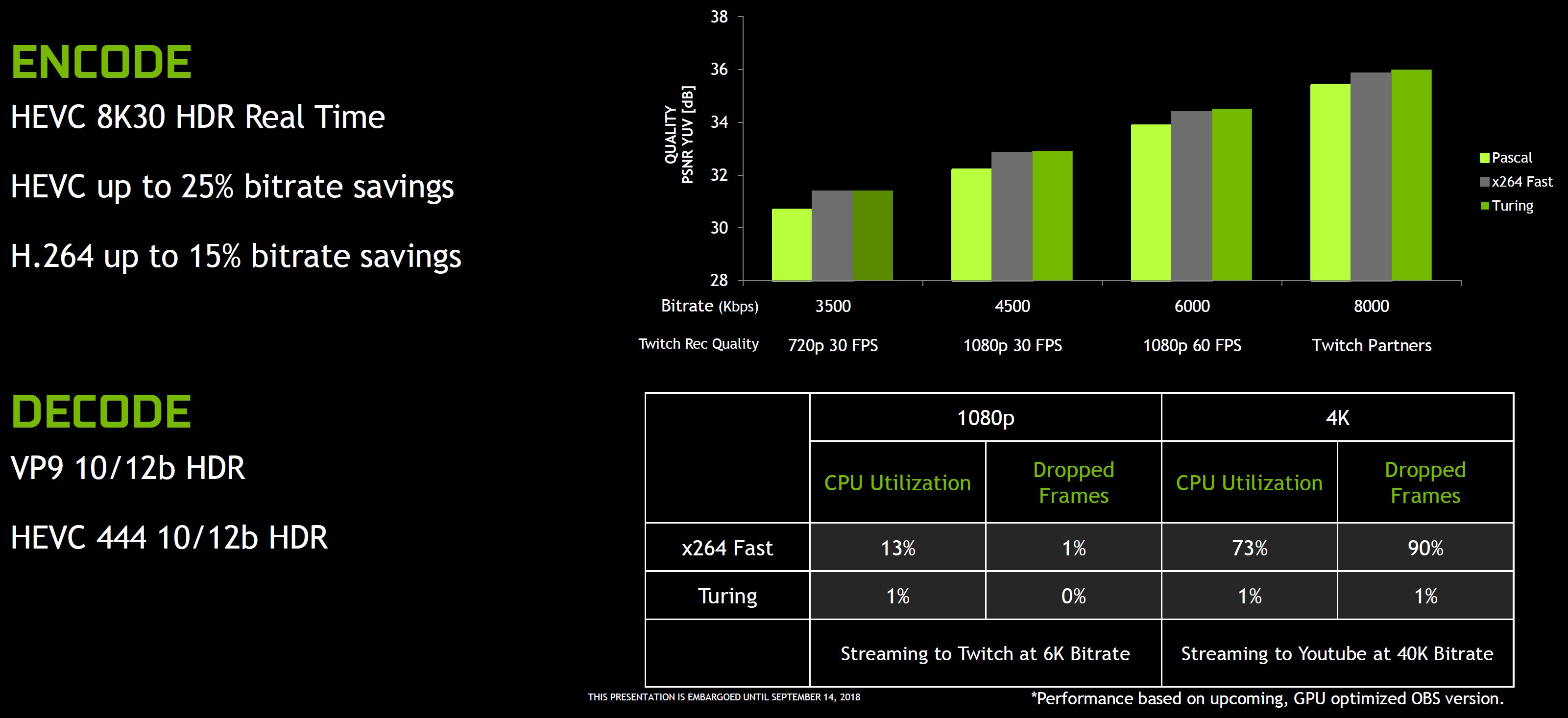Display outputs: A controller for the future
The GeForce RTX Founders Edition cards feature three DisplayPort 1.4a, an HDMI 2.0b output and a VirtualLink interface. They support up to four monitors at the same time and are of course HDCP 2.2 compatible. Turing also enables Display Stream Compression (DSC) via the DisplayPort, making it possible to operate an 8K (7680 x 4320 pixel) display via a single stream with 60 Hz. It is also the key to operating at 4K (3840 x 2160 pixels) with 120 Hz refresh and HDR.
But why only HDMI 2.0? The HDMI 2.1 specification was not completed and released until the end of November 2017, which went far beyond the time frame of the Turing design.
Speaking of HDR, Turing now natively reads HDR content via a special tone mapping hardware. Pascal, on the other hand, had to use a special processing that increased the latency. Finally, all three cards in the Founders Edition include VirtualLink connectors for next-generation VR HMDs. The VirtualLink interface uses a USB Type-C connector, but is based on an alternative mode with reconfigured pins to deliver four DisplayPort lanes, a bi-directional USB 3.1 Gen2 data channel for high-resolution sensors, and up to 27W of power.
According to the VirtualLink consortium, existing headsets typically operate within a 15W spectrum, including displays, controllers, audio, power loss via a 5m cable, cable electronics and plug loss. This new interface is now designed to support devices with higher performance and improved display capabilities, better audio quality, high-end cameras, and accessory connectors.
It should also be remembered that VirtualLink's power consumption is not reflected in the TDP specification of the GeForce RTX cards. Nvidia states that using the interface requires up to 35 W additionally.
Video Acceleration: Improvements in coding and decoding
Hardware-accelerated video features don't get as much attention from readers as games, but new graphics architectures typically add improvements that support the latest compression standards, integrate more advanced encoding tools/profiles, and move work from CPU to GPU
Coding performance is more important than ever for players streaming content to social platforms. A graphics processor that is able to handle the workload in the hardware relieves other platform resources, so encoding has less impact on the frame rates of the games.
In the past, however, GPU-accelerated encoding did not quite match the quality of software encoding at a specific bit rate. Nvidia now claims that Turing is changing this by absorbing the workload and even surpassing the quality of a software-based x264 fast encoding (according to its own signal-to-noise ratio benchmark). At a certain point, quality improvements offer a decrease in efficiency. So it's quite remarkable that Nvidia now says it's at least matching the Fast profile. But streamers are particularly interested in the GPU's ability to minimize CPU usage and bit rate.
The NVEnc Encoder is fast enough for 8K HDR in real time at 30 FPS. Optimizations on the encoder enable bitrate savings of up to 25% in HEVC (or a corresponding quality increase at the same bit rate) and up to 15% in H.264. Hardware acceleration also makes real-time encoding at 4K a viable option, although Nvidia does not specify which CPU it was tested with to achieve a 73% utilization in a software-only comparison.
In addition, the decoder block supports VP9 10-12-bit HDR. However, it is not clear what makes it different from GP102-based maps, as GeForce GTX 1080 Ti is clearly listed in Nvidia's NVDec support matrix with VP9 10/12-bit support. HEVC 4:4:4:4 10/12-bit HDR is also listed as a new feature for Turing. Since the entire Pascal-based portfolio already supports HEVC 4:4:4:4 10-bit, we must assume that Nvidia added the original 4:4:4:4 12 profile to TU102.
- 1 - Einführung und Vorstellung
- 2 - TU102 + GeForce RTX 2080 Ti
- 3 - TU104 + GeForce RTX 2080
- 4 - TU106 + GeForce RTX 2070
- 5 - Performance-Anstieg für bestehende Anwendungen
- 6 - Tensor-Kerne und DLSS
- 7 - Ray Tracing in Echtzeit
- 8 - NVLink: als Brücke wohin?
- 9 - RTX-OPs: wir rechnen nach
- 10 - Shading-Verbesserungen
- 11 - Anschlüsse und Video
- 12 - 1-Klick-Übertaktung
- 13 - Tschüss, Gebläselüfter!
- 14 - Zusammenfassung und Fazit




































Kommentieren